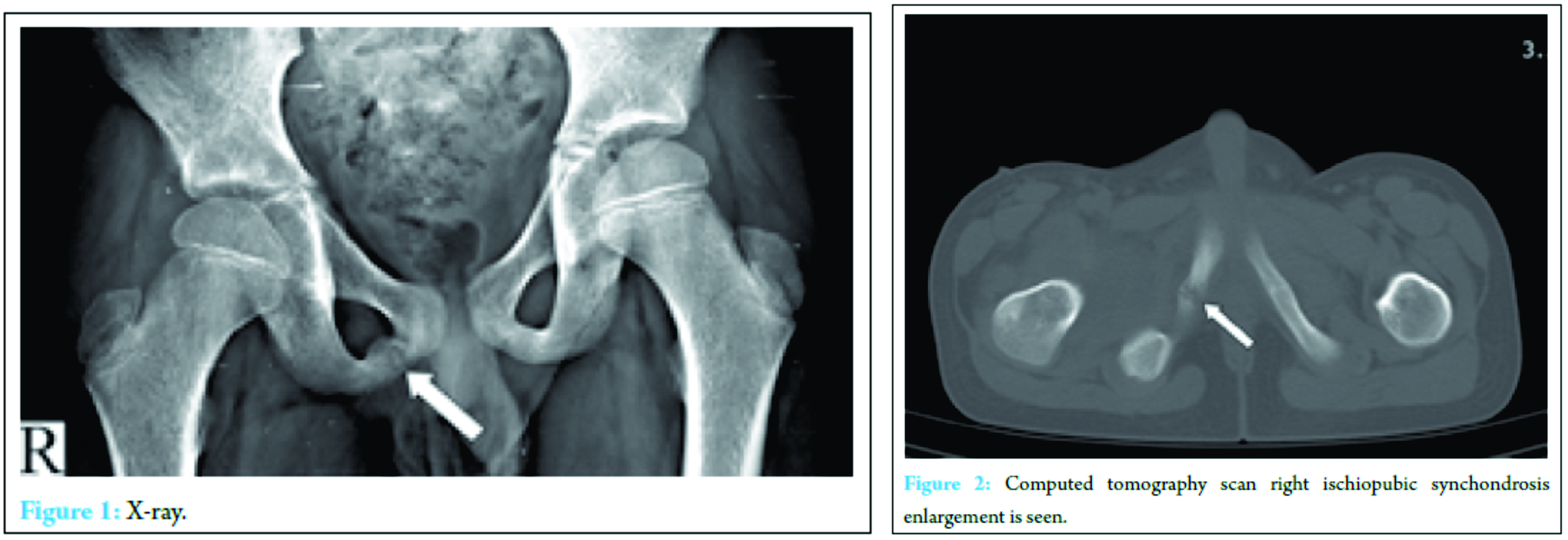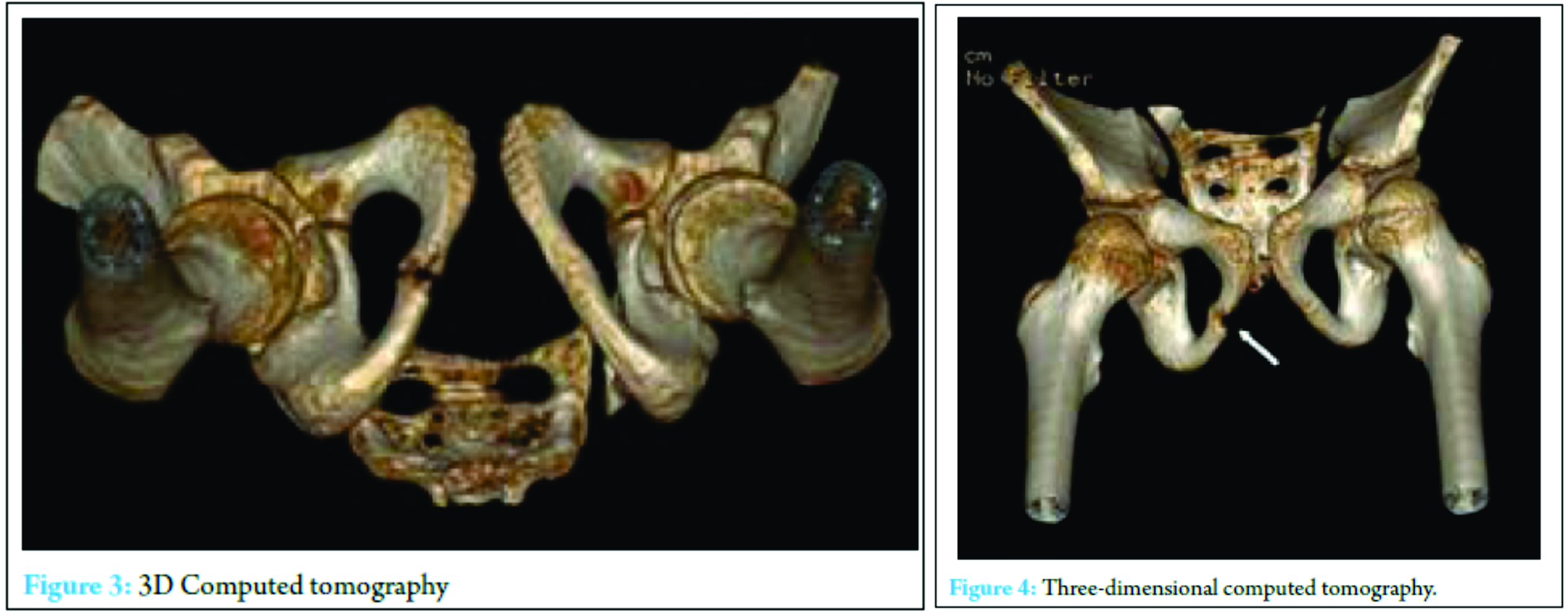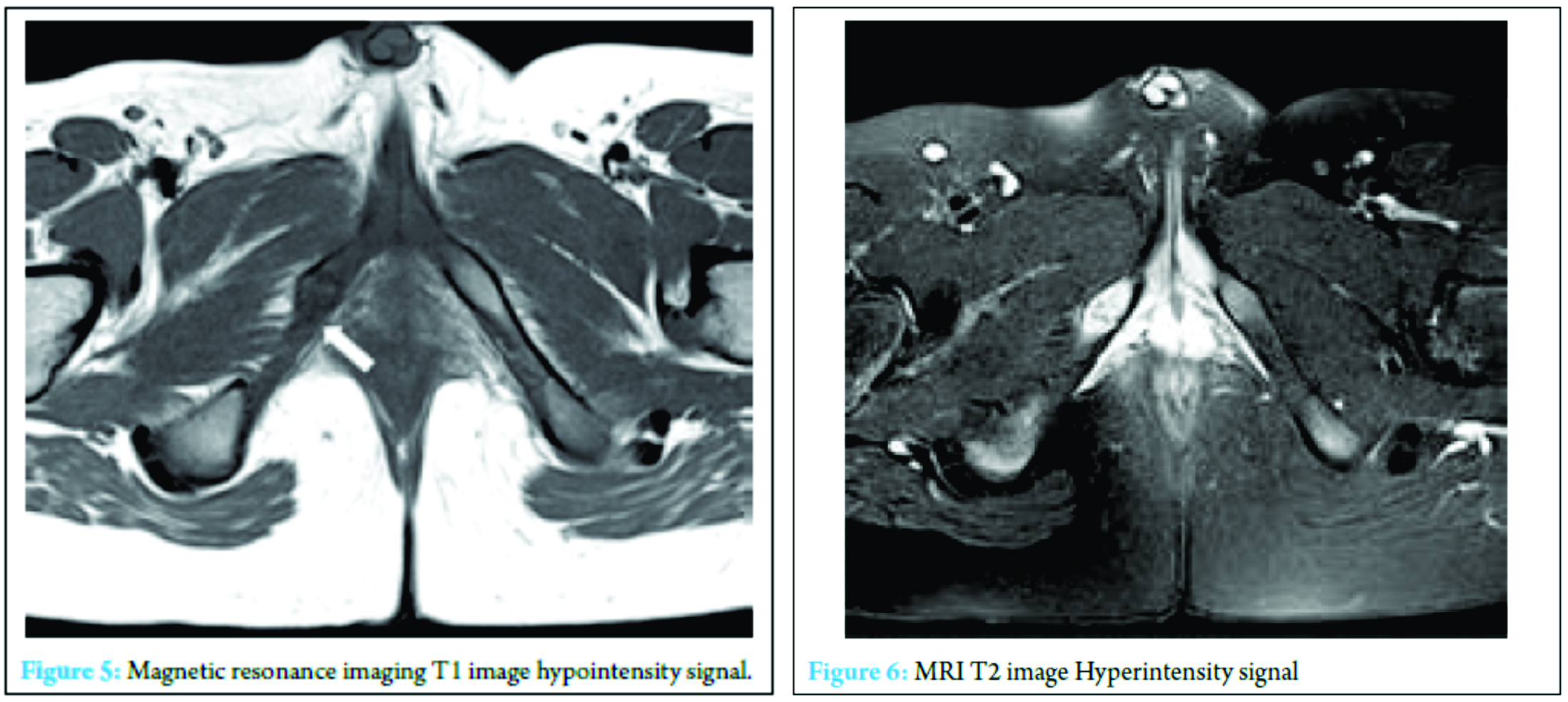[box type=”bio”] What to Learn from this Article?[/box]
The diagnosis is challenging, while treatment approach is conservative only. Other causes must be ruled out if there is history indicating some other cause for the same symptoms.
Case Report | Volume 7 | Issue 1 | JOCR January – February 2017 | Page 24-27 | Amit Prakash Chaudhari, Gautam Shah, Sameer Sanjeev Patil, Aashish Babanrao Ghodke, Sagar B Kelkar. DOI: 10.13107/jocr.2250-0685.672
Authors: Amit Prakash Chaudhari[1], Gautam Shah[1], Sameer Sanjeev Patil[1], Aashish Babanrao Ghodke[1], Sagar B Kelkar[2]
[1] Department of Orthopaedics, ACPM Medical College and Hospital, Dhule, Maharashtra, India.
[2] Department of Orthopaedics, Kelkar Hospital, Nashik, Maharashtra, India.
Address of Correspondence
Dr. Sameer Sanjeev Patil,
Department of Orthopaedics, ACPM Medical College and Hospital, Dhule – 424 001, Maharashtra, India. Phone: +91-8600883303.
E-mail: sameer15789@gmail.com
Abstract
Introduction: Pain in groin without any history of trauma or positive clinical findings of infection or stress fracture in ischiopubic ramus poses challenges in diagnosis of the condition in prepubertal age. “Osteochondrosis of ischiopubic synchondrosis (IPS)” also called as “Van Neck-Odelberg” disease. Left leg dominant patient presented with pain in groin and limping with left leg dominance. Differential diagnosis – such as stress fractures, osteomyelitis, tuberculosis, post-traumatic osteolysis, or any neoplasia – is need be ruled out to arrive at diagnosis. The literature is reviewed with modern technologies for diagnosis of the same.
Case Report: A 12-year-old, left limb dominant boy with tenderness in the right groin as the only clinical finding and sclerotic shadow over ischiopubic region on X-ray posed a challenge for diagnosis. With further studies by computed tomography and magnetic resonance imaging diagnosis was done. Hence, we are presenting a case labeled as Van Neck-Odelberg disease.
Conclusion: Diagnosis of Van Neck-Odelberg disease is a challenging diagnosis. Other conditions such as post-traumatic osteolysis, osteomyelitis, and stress fractures in prepubertal age need to be ruled out. Clinical symptoms must be present to label it as osteochondritis of IPS on radiographs as unilateral delayed fusion of the same is a physiological process in asymptomatic cases.
Keywords: Van Neck-Odelberg, osteochondrosis, ischiopubic synchondrosis, groin pain.
Introduction
Odelberg and Van Neck described changes found at ischiopubic zone in radiographs taken in prepubescent age group and later in 1924 Van Neck coined the term “osteochondritis ischiopubica [1].” Development of ischiopubic region starts during fifth to the sixth month of intrauterine life and is fully formed at birth. Growth is completed from two ossification centers, superomedial public center and posterolateral ischial center with a strip of cartilaginous tissue extending between these two and is called “ischiopubic synchondrosis (IPS)” [2, 3]. IPS works as temporary joint between ischium and pubis [4, 5]. Its ossification begins in early childhood and completed before puberty [4, 6, 7] and final obliteration occurs after thinning of cartilaginous strip followed by bony union [2, 3, 6, 8]. During this unilateral enlargement in the later stage is frequently observed and has no pathological significance [9]. Although it is considered a normal physiological phenomenon and ischiopubic bones unite without any clinical symptoms, some children experience groin pain and limping during this period. Differential diagnosis in such cases is stress fracture, post-traumatic osteolysis, osteomyelitis or neoplasia.
Case Report
A 12-year-old, left limb dominant boy came to our department with complaints of pain in right groin with limp since 2 months. On routine investigations, his white blood cell count was within normal range, and erythrocyte sedimentation rate was raised with positive C-reactive protein ratio. Antistreptolysin O titer and rheumatic factors were in normal range. On clinical examination, no swelling or raised local temperature was observed. There was deep tenderness over right groin region. On X-ray sclerotic shadow was observed in ischiopubic region of a size of cherry extending toward obturator foramen without any periosteal reaction or soft tissue shadows (Fig. 1) On computed tomography (CT) scan enlarged unfused IPS with lytic lesion was observed.
On magnetic resonance imaging (MRI), there was hyperintense signal on T2 with fat saturation and hypointense signal on T1. Fibrous bridging with fusiform swelling and signal alteration of the adjacent soft tissue was also observed (Fig. 5 and 6).
The patient was treated conservatively with administration of nonsteroidal anti-inflammatory drugs and strict bed rest for 3 weeks, following which patient was improved and had no symptoms on further follow-up visits after 3 months and 6 months. No recurrence was noted on any follow-up visits.
Discussion
In 1923, Odelberg described a radiolucent swelling at ischiopubic junction in prepubescent skeleton for the first time. In 1924, Van Neck also documented similar findings and coined the term “osteochondritis ischiopubica” [1]. Ossification process of IPS starts early in childhood, involving thinning until its final obliteration and bony fusion which is completed before puberty [2, 3, 4]. Presently, this finding is considered as normal physiologic ossification pattern frequently showing age correlation. In most of the cases this process is asymptomatic but in some children symptoms like groin pain, restriction of hip mobility and limping is observed clinically. Enlarged and fusiform tumor-like image is observed on radiographs [5, 6, 9]. Asymmetrical enlargement of the IPS is a physiologic phenomenon related to asymmetrical mechanical stress of the adductors, iliopsoas, and gemellus over each hemipelvis. This causes constant movement of the IPS, with an inflammatory reaction, and delayed union of the cartilage layers and ossification centers [4, 5, 9, 10, 11]. Wait et al. reported 10 cases of Van Neck-Odelberg disease where the hypothesis that the condition results from an excessive pull of the hamstring tendon on the ischial tuberosity [12]. Herneth et al. proposed a correlation between unilateral enlargement of IPS in pre-pubertal children and foot dominance. The explanation for which would be increased ground reaction forces applied on weight bearing leg which is non-dominating compared to the dominating swinging leg [5, 9]. Hubner et al. described asymmetric ossification of IPS in unilateral hip dislocation, hip arthritis, congenital coxa vera, Legg-Calve-Perthes disease beginning at the healthy hemipelvis and occurring earlier than in normal children [5, 9]. On radiographs and CT scans initial findings are decalcification, rarefaction and cystic areas of absorption. After weeks to months, recalcification is observed with increased density and apparent bone regeneration [12] (Fig. 1, 2, 3, 4). A triangular or rounded swelling the size of a cherry or under is seen in the region of the ischiopubic junction and apparently projecting into the obturator foramen. The swelling has a cloudy or granular appearance, and translucencies are present. It is sharply circumscribed and the surrounding bone shows a normal structure without atrophy or periosteal deposits. The course is of this process is compared to aseptic necrosis [13, 14]. On MRI signal alteration at ischiopubic zoneis observed with a hyperintense signal on T2, fat saturation or STIR and hypointense signal on T1. In addition, fusiform swelling and fibrous bridging can be seen with signal alteration of surrounding tissue [4] (Fig. 5 and 6) Ceroni et al. mentioned a band like area in the center of IPS which was hypointense on all sequences. The band-like area and well-defined margin of IPS on MRI aids ruling out neoplastic lesion [15]. The disease is benign and symptoms subside rapidly within a week or two by avoiding exertion, taking rest without any special treatment. Radiologic course of the disease is more prolonged extending for several months to 1 year. Once the ossification is complete, no deformation can be seen at the junction [16]. Diagnosis is based on roentgenologic examination but cannot be determined solely by this means as clinical symptoms must be present as well (Table 1).
Conclusion
Diagnosis of Van Neck-Odelberg disease is a challenging diagnosis to make from with ruling out others such as post-traumatic osteolysis, osteomyelitis, and stress fractures in prepubertal age. Clinical symptoms must be present to label it as osteochondritis of IPS on radiographs as unilateral delayed fusion of the same is a physiological process in asymptomatic cases.
Clinical Message
Clinical symptoms must be present to label the delayed unilateral ischiopubic synchondrosis as Van Neck-Odelberg disease. Only radiographic findings cannot be regarded as a diagnosis. MRI are not must but can be considered to rule out other differentials and confirm the diagnosis.
References
1. Macarini L, Lallo T, Milillo P, Muscarella S, Vinci R, Stoppino LP. Case report: Multimodality imaging of Van Neck-Odelberg disease. Indian J Radiol Imaging 2011;21(2):107-110.
2. Sandomenico C, Tamburrini O. Bilateral accessory ossification center of the ischio-pubic synchondrosis in a female infant. Follow-up for over a three year period. Pediatr Radiol 1981;10(4):233-236.
3. Birkner R. Normal Radiologic Patterns and Variances of the Human Skeleton: An X-ray Atlas of Adults and Children. Baltimore-Munich: Urban and Schwarzenberg; 1978.
4. Herneth AM, Trattnig S, Bader TR, Ba-Ssalamah A, Ponhold W, Wandl-Vergesslich K, et al. MR imaging of the ischiopubic synchondrosis. Magn Reson Imaging 2000;18(5):519-524.
5. Keats TE. Plain film radiography: Sources of diagnostic errors. In: Resnick D, editor. Diagnosis of Bone and Joint Disorders. 3rd ed. San Diego: Saunders; 1996. p. 27.
6. Caffey J, Ross SE. The ischiopubic synchondrosis in healthy children: some normal roentgenologic findings. Am J Roentgenol Radium Ther Nucl Med 1956;76(3):488-494.
7. Thomas PS, Renton P, Hall C, Kalifa G, Dubousset J, Lalande G. In: Carty H, editor. Imaging Children. Ch. 8. Edinburgh: Churchill Livingstone; 1995. p. 845-1291.
8. Keats TH. An Atlas of Normal Roentgen Variants That May Simulate Disease. Chicago: Year Book Medical Publishers; 1979.
9. Herneth AM, Philipp MO, Pretterklieber ML, Balassy C, Winkelbauer FW, Beaulieu CF. Asymmetric closure of ischiopubic synchondrosis in pediatric patients: correlation with foot dominance. AJR Am J Roentgenol 2004;182(2):361-365.
10. Neitzschman HR. Radiology case of the month. Hip trauma. Normal physiologic asymmetric closure of the ischiopubic synchondroses. J La State Med Soc 1997;149(6):186-188.
11. Kloiber R, Udjus K, McIntyre W, Jarvis J. The scintigraphic and radiographic appearance of the ischiopubic synchondroses in normal children and in osteomyelitis. Pediatr Radiol 1988;18(1):57-61.
12. Wait A, Gaskill T, Sarwar Z, Busch M. Van neck disease: osteochondrosis of the ischiopubic synchondrosis. J Pediatr Orthop 2011;31(5):520-524.
13. Corper FJ. Osteochondritis ischiopubca in childhood. Am J Dis Child 1938;56:957.
14. Meissner K. Ischiopubic osteochondritis. Tuberkulosearzt 1951;5(7):390-394.
15. Ceroni D, Mousny M, Anooshiravani-Dumont M, Buerge-Edwards A, Kaelin A. MRI abnormalities of the ischiopubic synchondrosis in children: a case report. Acta Orthop Belg 2004;70(3):283-286.
16. Holsti LR. Osteochondritis ischiopubica. Acta Radiol 1956;45(3):178-184.
| How to Cite This Article: Chaudhari AP, Shah G, Patil SS, Ghodke AB, Kelkar SB. Van Neck-Odelberg Disease: A Rare Case Report. Journal of Orthopaedic Case Reports 2017 Jan-Feb;7(1):24-27. Available from: https://www.jocr.co.in/wp/wp-content/uploads/10.-2250-0685.672.pdf |
[Full Text HTML] [Full Text PDF] [XML]
[rate_this_page]
Dear Reader, We are very excited about New Features in JOCR. Please do let us know what you think by Clicking on the Sliding “Feedback Form” button on the <<< left of the page or sending a mail to us at editor.jocr@gmail.com







